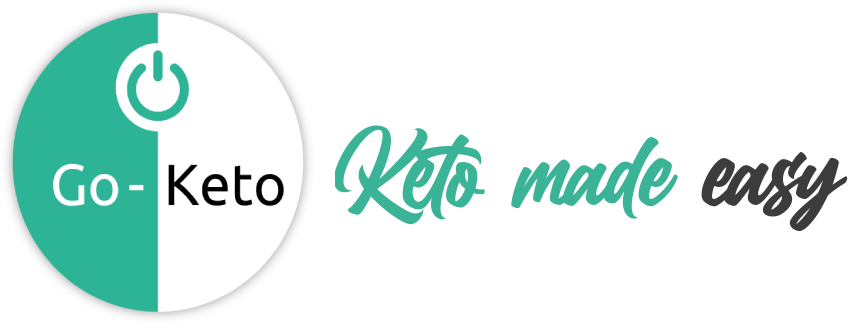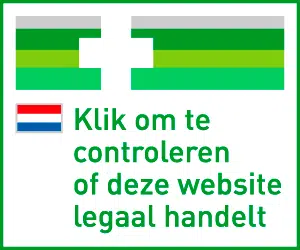Introduction
Chances are you’ve never heard of the keto diet. But what exactly is the keto diet? As with many diets, you have a few important questions:
- Can you lose weight for good when you lose weight on this diet?
- Is it hard to sustain?
- What can you eat and what is absolutely not?
Read on to learn all about the keto diet and find out if this way of eating is right for you.
What exactly is the keto diet?
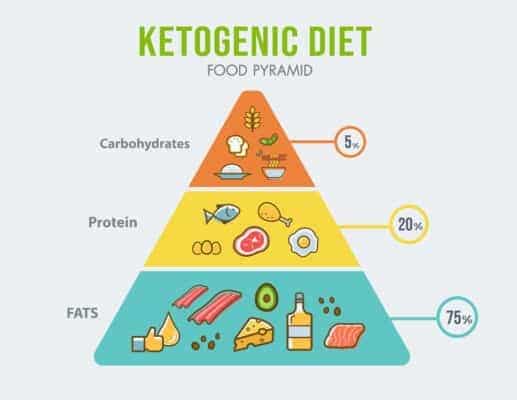
The keto diet is basically a low-carbohydrate and high-fat way of eating.
By eating ketogenic:
- You take in much less carbohydrates than normal
- You avoid the thickening sugars that carbohydrates bring
- You maintain a moderate protein intake
- You increase the fat intake (and by this we do not mean extra bacon, but the healthy Omega fats)
The keto diet is a bit like the older low-carbohydrate diet. What makes the keto diet so different?
If you look at your current diet, you get most of your energy from carbohydrates. Think, for example, of bread, pasta, rice, potatoes and muesli. Carbohydrates are basically a good source of energy, but they can also make you gain weight quickly and feel tired and lazy more often (the well-known after-dinner dip). In addition, many foods contain a lot of sugar, such as bread and pasta, but also muesli and even ham. These sugars make it more difficult to eat healthily, because you often do not expect them in a certain product.
With the keto diet, you eat few carbohydrates, while you increase the fats in your diet. Isn’t it crazy? Shouldn’t we avoid the fatty things as much as possible? A piece of science.
Based on your total calorie intake, 60 to 80% of the calories you take in in a day (during a keto diet) are fat, followed by 10 to 15% calories from protein and less than 10% of the total daily calorie intake from carbohydrates. These are approximately 20 to 25 grams of carbohydrates per day.
The idea behind this, which has also been scientifically proven, is that a low-carbohydrate and high-fat diet helps you burn fat more effectively. This way of eating has many benefits in terms of weight loss, health and performance.
When you feed your body less carbohydrates, your body switches from burning glucose (sugars from carbohydrates) to burning fat. During this process, your liver produces ketones, which mainly feed on your fat supply. In other words, keto is not about the sugars, but all about the ketones.
Of course this has the nice side effect that you lose weight, but there are many more benefits for your physical and mental condition. Some of the benefits:
- Weight loss
- More control over your appetite and therefore less binge eating
- A nice steady supply of energy without the sugar spikes and dips that you can experience after carbohydrate-rich meals
- Control your blood sugar (something that can be very beneficial in people with type 2 diabetes)
- Improved fitness and general health
- More energy and less energy dips
- Better mental health and more focus
- A calmer stomach that is less aggressive
- Improved stamina
- The keto diet has been used in the past to treat epilepsy, among other things
You have seen the word “ketones” a few times now. Below we take a closer look at what exactly ketones are. We also discuss an important factor of the keto diet: being in ketosis.
What are ketones and what does being in ketosis mean
The “keto” in the ketogenic diet stands for ketones. These are small fuel molecules that act as an alternative fuel for your body. Ketones are used when the glucose in your blood is scarce because the blood sugar is low.
Normally we burn sugars, which come from the carbohydrates in our food. When you eat very few carbohydrates or calories, the liver produces ketones from fat. These ketones then serve as a fuel source for the whole body, mainly for the brain. The brain uses a lot of energy every day and cannot get this energy directly from fat. This only works on glucose or ketones.
With a ketogenic lifestyle, your body switches from a sugar burner (carbohydrates) to a fat burner (keto). This allows you to burn fat 24 hours a day. When insulin levels get very low, fat burning increases dramatically. This makes it easier for your body to access and use your fat stores.
Of course, that’s good news if you’re trying to lose weight, but there are other and less obvious benefits too. That’s how you experience
- Less hunger because your body uses the existing fat stores
- You get a nice steady supply of energy without the sugar spikes and dips that you can experience after high-carb meals
- This can help you stay alert and focused
When the body produces ketones, it enters a metabolic state called ketosis. The fastest way to get there is to fast and not eat anything, but of course you will not be able to hold on to this forever.
A keto diet also results in ketosis and can be followed indefinitely. It is therefore more a lifestyle than a diet. Eating ketogenic allows you to enjoy the benefits of fasting, including weight loss, without having to stop eating for long.
Is it a new diet craze?
The ketogenic diet is not a new diet hype. In fact, the keto diet has a rich medical history. The method was developed in the 1920s to treat epilepsy in children. The somewhat older Atkins diet, which was immensely popular in the 1970s, also used ketosis to promote weight loss. However, this did not really look at what you actually put in your mouth, so people quickly started having unhealthy habits. In the ketogenic diet this is also called ‘Dirty Keto’: lots of bacon and unhealthy fatty food and irresponsible diets.
Today, this way of eating has been given a modern and manageable guise and you read a lot about it on blogs, in diet books and you see a loyal fan base on social media who share their results with the rest of the world. And that is a great development, because more and more people experience the positive effects of a keto lifestyle.
Can it be sustained?
Research has shown it to be difficult to maintain the keto diet for a long time. Although you should be less hungry when you follow this diet, it is a very strict regime. As a result, you have to make a few major adjustments to your lifestyle and change quite a few habits.
The longer you eat this way, the easier it gets. In addition, the diet contains a lot of vegetables, enough fat, and a little meat or fish. It is therefore not a diet that you can only do as a carnivore. In fact, it is possible to do a Vegan keto diet.
Dangers of the keto diet and keto flu
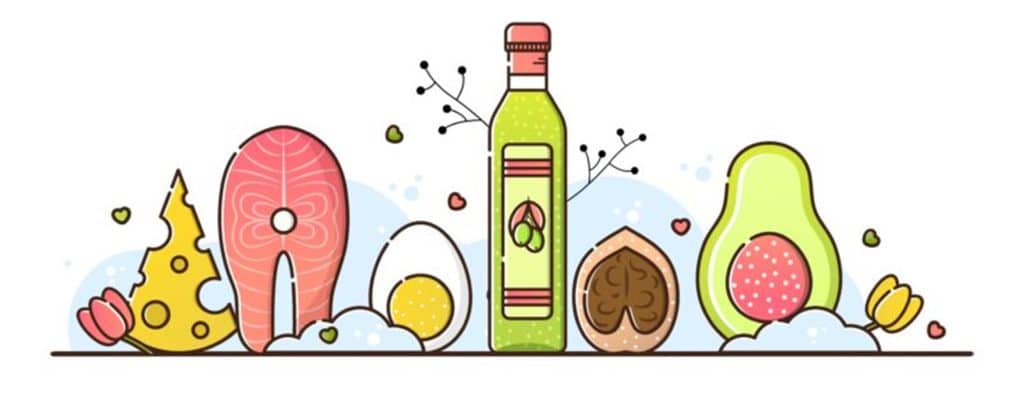
Every diet carries risks. Your body gets a shock from the big difference in your diet. Some studies have been conducted into the dangers of a ketogenic lifestyle. The consensus seems to be that there is little danger as long as you use common sense.
You can, however, experience some side effects from switching to keto and experience side effects such as headaches, nausea, dizziness and fatigue. These are flu-like symptoms and are also called the keto-flu.
The first time you switch to keto, your body has to get used to it. The sugars and glucose are not there, so your body has no energy. May feel a little bit of the flu because of that ….. that can take a few days and is over as soon as your body switches to fat
You can recognize the flu by the following symptoms:
- Headache
- Fatigue
- Dizziness
- Difficult to focus
- Lack of motivation
- Irritability
Many of the symptoms are caused by the fact that you lose a lot of moisture and therefore take in less minerals, the so-called electrolytes. Drinking more than before can help to reduce the onset and severity of symptoms. To combat your electrolyte deficiency, you can take nutritional supplements to replenish sodium, potassium and magnesium in the body.
Ketones are not dangerous to healthy persons. It is often confused with ketoacidosis. Ketoacidosis and ketosis are not the same. Ketosis is a healthy process of fat burning. When you are in ketosis you are in a state that is 100% natural. In ketoacidosis, the acidity of the blood in your body is too high. This is dangerous. Ketoacidosis can occur in people with type 1 diabetes. With a shortage of insulin, the blood sugar can rise very high. The body looks for another fuel and starts to burn fats. This releases decomposition substances: ketones. When you are in ketoacidosis, the ketones acidify your blood. Symptoms are rapid deep breathing and vomiting. If you have type 1 diabetes, you can fall into a coma. Ketoacidosis hardly ever occurs in people in good health. A healthy person is in ketosis when on a ketogenic or low-carbohydrate diet. People who want to follow this diet and have diabetes should consult with their doctor first.
It is possible to measure whether you are in ketosis by testing urine, blood or breath samples. With a blood test you have the most accurate result. Another way to know if your body is producing ketones is to pay attention to the signals your body is sending:
- Little appetite
- More energy
- More thirsty
- Foul smelling breath
- Metallic taste in your mouth
- Different odor of perspiration
- Weight loss
A ketogenic lifestyle may be beneficial for people with type 2 diabetes. Following a ketogenic diet does result in rapidly falling blood sugar levels, making it not recommended for people with type 1 diabetes.
For whom is a keto diet suitable and for whom not?
As mentioned earlier, this diet is less suitable for people with type 1 diabetes and can even be dangerous. It has an excellent effect on type 2 diabetes. Healthy people can eat as little carbohydrates as they want because the body can handle it.
Keep in mind that this is a diet that requires the necessary discipline. You should also have no problems taking a critical look at your current nutritional plan. It is not a quick fix, but a real life change that you have to take seriously to succeed.
You do have to be careful if you receive blood pressure medication or if you are breastfeeding. Are you walking around with an existing health complaint. Always consult your doctor or specialist in advance.
What do you have to eat and drink to get into ketosis
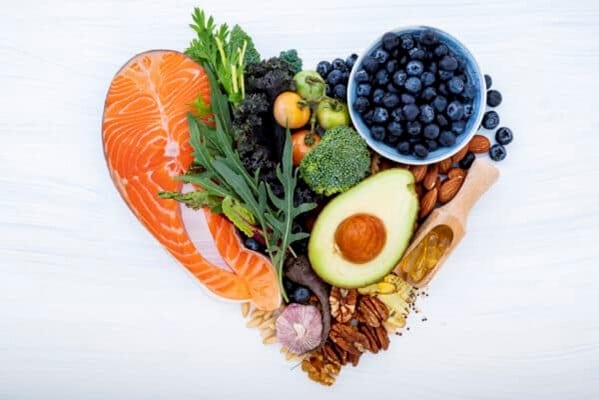
With the keto diet you leave out the carbohydrates and sugars, so you don’t eat bread, pasta, cookies and other fatteners for a while. You replace this with a lot of vegetables, some extra fat and some meat or fish. Extra fats are for example:
- Butter
- Oils
- MCT oil
- Cheeses
- Bacon
- Animal fats
- Nuts
- Seeds
- Eggs
- Avocado
You also eat (red) meat and fatty fish, such as steak and salmon. This is also where you get your proteins. The best vegetables to eat are green vegetables, including:
- Broccoli
- Cauliflower
- Spinach
- Basically all green vegetables
